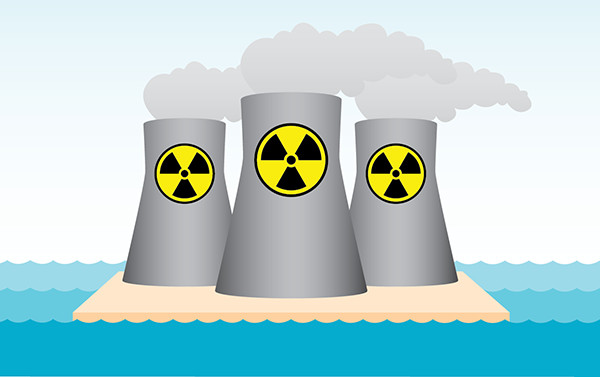
by Mary Caperton Morton Friday, August 8, 2014

Credit: Kathleen Cantner, AGI.
On March 11, 2011, a magnitude-9 earthquake just off the coast of Tohoku, Japan, set off a devastating tsunami that swamped the Fukushima Daiichi nuclear plant complex on the coast northeast of Tokyo. Backup generators failed, triggering nuclear meltdowns in three reactors that could no longer be cooled.
Now, a new design for offshore floating nuclear power plants, modeled after deepwater oil and gas drilling platforms, may help mitigate the risk of future nuclear disasters due to earthquakes and tsunamis.
Such floating plants could be built in a shipyard, then towed to their destinations 8 to 11 kilometers offshore, where they would be moored to the seafloor and connected to land by an underwater electric transmission line, according to a team of engineers led by Jacopo Buongiorno of MIT, who presented the research in April at the Small Modular Reactors Symposium, hosted by the American Society of Mechanical Engineers in Washington, D.C. In water 100 meters deep, the floating plants could ride out tsunami waves, which are low-amplitude in deep water but reach destructive heights as they near land. In the event of power loss, the floating platforms could be cooled with surrounding seawater, they noted.
“The biggest selling point is the enhanced safety,” Buongiorno said in a statement about the concept. And it could also help solve the problematic shortage of suitable sites for new power plants, which must be located near water for cooling purposes. “The ocean is inexpensive real estate,” said Buongiorno.
© 2008-2021. All rights reserved. Any copying, redistribution or retransmission of any of the contents of this service without the expressed written permission of the American Geosciences Institute is expressly prohibited. Click here for all copyright requests.